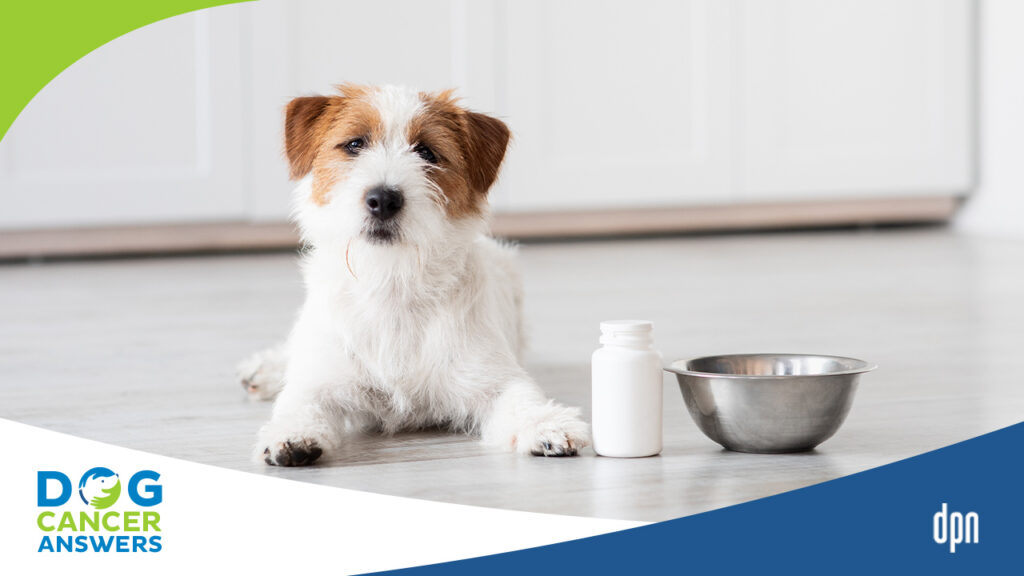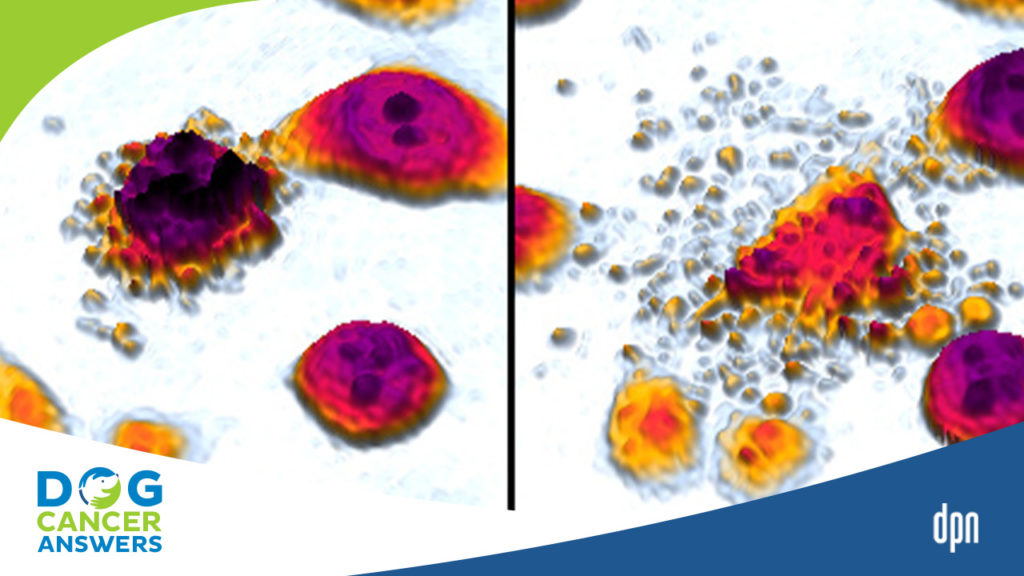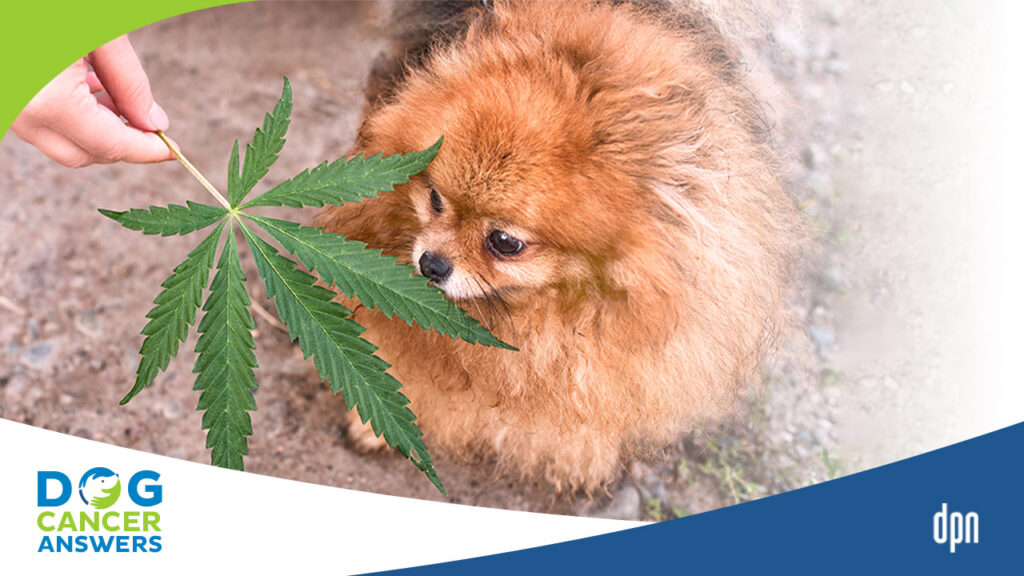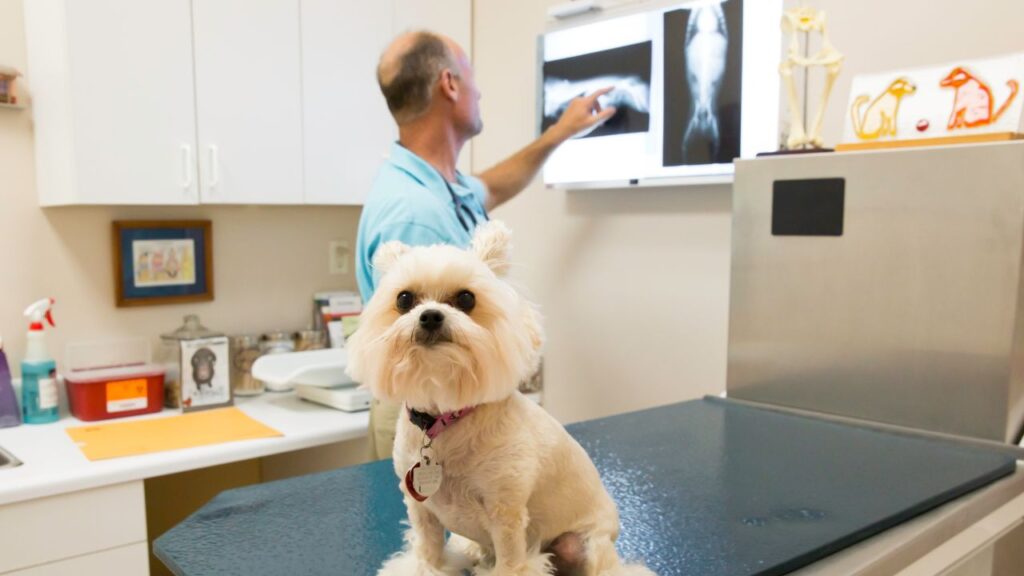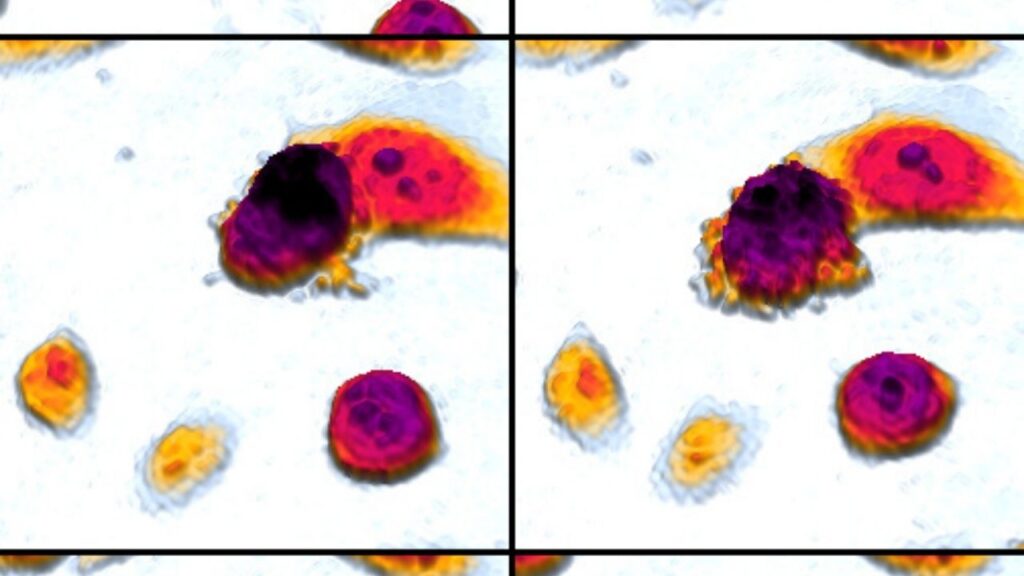Remission is the word that every person who loves a dog with cancer wants to hear – it means that your dog is responding to treatment.
Key Takeaways
- Dogs with cancer can go into partial, durable, or complete remission. They can also come out of remission and go back into remission.
- The signs and symptoms of cancer can fully resolve, and dogs can seem cancer-free and look cancer-free on tests and imaging. However, being in remission does not mean the cancer is cured permanently because cancer cells could still be present undetected in the body.
- When your veterinarian says your dog is in remission, it could mean several things depending on the case. They could mean the cancer has stopped growing, has shrunk, or is undetectable. It could also mean that the tumor is still there, but the signs and symptoms have lessened, leading to improved health and well-being.
- Depending upon the diagnosis and the treatments used, dogs can live with good life quality for months to years.
- There are no hard-and-fast rules about how many dogs survive cancer to die of another cause, but some dogs do achieve what is called a durable remission, which means the dog is stable and the disease does not progress.
What Dog Cancer Remission Means
Remission is when your dog’s cancer regresses in response to treatment. Symptoms will resolve, and your dog will look healthier and happier.1
It doesn’t mean “permanently cured,” but it is certainly good news for both longevity and life quality.
A common goal in veterinary oncology is what is called “stable disease” with a good quality of life. We can’t always cure cancer if it is caught late (and many if not most dog cancers are caught late). But we may be able to stabilize cancer, instead. If a dog’s tumor hasn’t shrunk but also hasn’t grown, and the dog feels fine and is living a good life, veterinary oncologists and dog lovers usually think this is a good outcome.
In the end, remission of dog cancer may mean you hear the words “You’d never know he has cancer!” at the dog park.
Let’s review some vocabulary words you may hear when discussing remission with your veterinarian.
Complete vs. Partial Remission
Remission can be partial or complete.
Partial remission is when your dog’s symptoms improve, there is less cancer throughout the body, and the tumor may shrink.2
Complete remission is when the cancer completely regresses and can no longer be detected.1 Dogs in complete remission look just like a healthy dog that has never had cancer.
Dr. Demian Dressler helps explain remission to a listener on DOG CANCER ANSWERS.
Remission is Not a Cure
Unfortunately, even though a dog in remission looks like she is totally free of cancer, there are likely still cancer cells floating around in the body. Down the road, the dog can relapse or come out of remission, and cancer will start causing clinical signs again.
How long remission can last varies widely depending on the cancer type and treatments used. For example, up to 90% of dogs with lymphoma treated with the CHOP chemotherapy protocol achieve complete remission, and the median survival time is 13-14 months. Dogs with lymphoma who are treated with just prednisone have a 50% chance of achieving remission, and the median survival time is 2-3 months.
Lymphoma is well-known as one of the more responsive canine cancers to therapy, with many dogs achieving remission after treatment. Oral melanoma, on the other hand, is extremely aggressive and may recur quickly even after complete surgical removal.

Clinical Remission
“Clinical remission” is generally used to describe cases where the clinical signs of cancer have resolved.5,7
A dog who is in complete clinical remission will have no signs of cancer – the tumor will have disappeared, or the lymph nodes will have shrunk back to normal size, or she will be eating normally again.7
A dog in partial clinical remission may still show some clinical signs of cancer, but they will be milder than they were before.
Achieving clinical remission means that the treatment is working.
Dr. Douglas Thamm discusses Tanovea, a drug that is helping dogs who relapse after lymphoma treatments.
Molecular Remission
“Molecular remission” has stricter requirements and means that even extremely sensitive DNA testing of blood or bone marrow samples shows no evidence of cancer cells.6,7 Dogs can have clinical remission and not show any clinical signs of cancer but still have molecular evidence of disease when advanced lab tests are run.7
Molecular remission is particularly important if you are pursuing a bone marrow transplant for your dog with lymphoma. This procedure is more likely to be effective and result in a cure if the dog is in both clinical and molecular remission.7
Dr. Steven Suter discusses his invasive, but very effective, bone marrow transplant procedure. It has helped hundreds of dogs achieve remission!
Durable Remission
The phrase “durable remission” can be used in various ways and doesn’t have a set definition. However, it generally means that the response to treatment holds stable for an extended period, ranging from months to years.3,4
A durable remission could also be a complete remission, but a partial remission can also be durable.
A durable remission is what we all want for our dogs with cancer, as it means the dog is stable and the disease is not progressing.
Can My Dog Go Back in Remission Multiple Times?
Yes! Even if your dog relapses, he can still go back into remission multiple times. Sometimes using the same treatment protocol is effective, other times a different therapy is needed. Exact results will vary depending on the cancer type, the treatment(s) used, and your dog’s unique case.
For example, 95% of dogs who go into remission from lymphoma after chemotherapy treatment will eventually relapse. Many chemotherapy options have been studied for lymphoma, both as first-line treatments and as “rescue” protocols that are used when a first-line treatment fails. If your dog had CHOP the first time around, doing a second round of CHOP has an 80% chance of achieving a second complete clinical remission. Using a rescue protocol such as LOPP has about a 60% chance of remission.8
Generally, each remission tends to be shorter than the previous one. So a dog’s second remission will usually be shorter than the first, third remission shorter than the second, etc.
- Canine lymphoma. Purdue University College of Veterinary Medicine. https://vet.purdue.edu/pcop/canine-lymphoma-research.php. Accessed December 15, 2022.
- NCI Dictionary of Cancer terms. National Cancer Institute. https://www.cancer.gov/publications/dictionaries/cancer-terms/def/partial-remission. Accessed December 15, 2022.
- Kaufman HL, Andtbacka RH, Collichio FA, et al. Durable response rate as an endpoint in cancer immunotherapy: Insights from oncolytic virus clinical trials. Journal for ImmunoTherapy of Cancer. 2017;5(1). doi:10.1186/s40425-017-0276-8
- Orange M, Poidimani N, Crosignani A, Werthmann PG, Bertotto C. Complete, durable remission of advanced hepatocellular carcinoma under treatment with viscum album extracts: A case report. Complementary Medicine Research. 2022;29(6):483-491. doi:10.1159/000525409
- Harrison ML, Gore ME, Spriggs D, et al. Duration of second or greater complete clinical remission in ovarian cancer: Exploring potential endpoints for clinical trials. Gynecologic Oncology. 2007;106(3):469-475. doi:10.1016/j.ygyno.2007.05.008
- Acute myeloid Leukemia (AML): Status after treatment. Health Encyclopedia – University of Rochester Medical Center. https://www.urmc.rochester.edu/encyclopedia/content.aspx?contenttypeid=34&contentid=BAMLD4. Accessed December 15, 2022.
- Bone Marrow transplant. Bellingham Veterinary. https://bhamvet.com/news/bone-marrow-extended/. Published February 6, 2020. Accessed December 15, 2022.
- Medical oncology: Canine rescue lymphoma. NC State Veterinary Hospital. https://hospital.cvm.ncsu.edu/services/small-animals/cancer-oncology/oncology/canine-rescue-lymphoma/. Accessed December 15, 2022.
Topics
Did You Find This Helpful? Share It with Your Pack!
Use the buttons to share what you learned on social media, download a PDF, print this out, or email it to your veterinarian.
